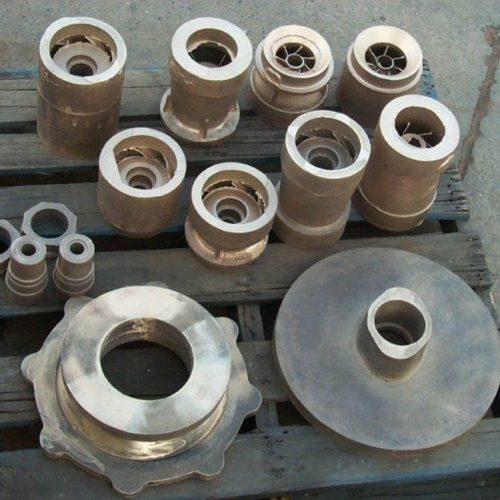The manufacturing industry has endowed the metalworking sector with countless production processes, methods of turning raw metal ingots into refined products. Metal alloys are forged and extruded, rolled and heat-treated. Non-ferrous metal casting represents a very specialized stratum of this multi-layered industrial practice. The metal is heated and melted until its crystalline structure dissolves and becomes liquefied. The formerly rigid metallic alloy or element is then channelled into hollow moulds. At this point, the base unrefined metallic liquid cools and solidifies. This “casting” is then knocked out and judged as complete. Additional stages are on hand if required, including special surface finishes.
Introducing Non-ferrous Metal Casting
Described by numerous resources as a time-proven means of manufacturing shaped metal components, the process creates parts to exacting dimensions. Desired shapes and sizes present no obstacle because the metal has been melted until it fills every contour of the mould. But what of the actual elements and alloys that flow into these shaped frames? Foundries divide the raw materials used inside these super-heated enclosures, placing iron-based (ferrous) products in one corner and non-ferrous materials in the other. Aluminium parts and bronze components are two of the chief affiliates of this members-only casting group, but there are others. Aluminium, in particular, represents new market growth areas as the lightweight metal penetrates ever greater production environments, areas formally reserved for stainless steel.
Refining the Process
The rationale behind a non-ferrous metal casting process is easy enough to define, but it would occupy more space than we have in this single article. Non-ferrous parts are non-magnetic, which is an important property when targeting a metal for certain electronic applications. A ferrous material adds possible corrosion susceptibility to a product, something a non-ferrous part typically avoids due to its base molecular build. In fact, iron-free metals are gifted with countless characteristics. Copper and gold parts, as one example, add electrical conductivity to their metal-worked profiles, which makes for superior wiring and electronic contacts. On returning to industrial-class castings, large zinc and aluminium parts are processed at speed within top-notch foundries and factories as numerous casting methods are called into action. These include gravity casting, die casting, and vacuum casting methods.
Ingots of magnesium, zinc, aluminium, copper, and other ferrous-free substitutes take on the role of the raw supply medium in this fiery scenario. The material is defined by its initial elemental characteristics and the properties of different alloy forms, but, at least upon reaching their set melting points, these crystalline properties can be momentarily suspended as the metals liquefy and flow into shaped moulds, eventually cooling and solidifying into a desired shape.


